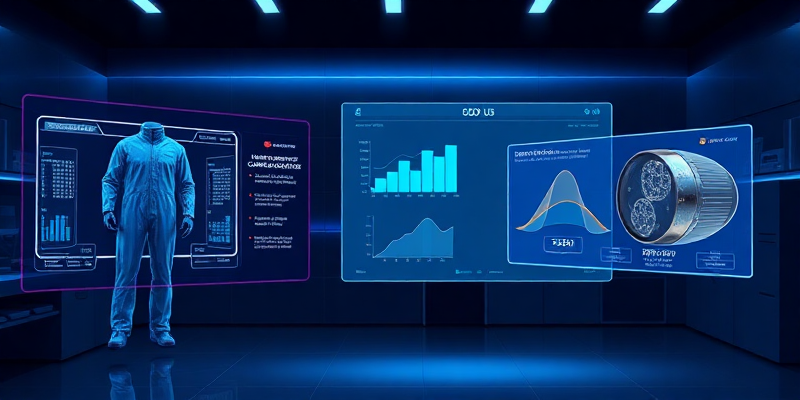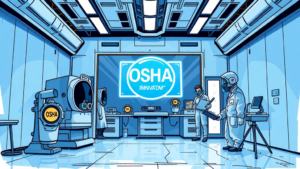
In today’s high-stakes manufacturing environment, the true cost of cleanroom suits extends far beyond the price tag. While procurement teams fixate on unit costs, the most significant savings opportunities often remain hidden in complex supply chains and operational inefficiencies. This oversight is particularly costly for multinational corporations managing cleanroom operations across diverse regulatory environments and geographic regions.
Our analysis of global procurement data reveals that companies typically overspend by 15-30% on cleanroom suits due to fragmented sourcing strategies and overlooked logistics optimization. The conventional approach—comparing base prices from multiple vendors—fails to capture the complete cost picture. Forward-thinking organizations are now adopting sophisticated procurement methodologies that analyze total cost of ownership across the entire cleanroom suit lifecycle.
At midposi.com, we’ve pioneered advanced procurement analytics that uncover these hidden cost centers and transform them into strategic advantages. By examining the interconnected nature of quality, logistics, and scale, we’ve helped multinational clients achieve unprecedented savings while enhancing compliance and operational efficiency. This guide explores the innovative strategies that are reshaping cleanroom suit procurement for global enterprises.
The Hidden Costs of Cleanroom Suit Procurement
Unpacking Logistics and Shipping Expenses
The seemingly straightforward cost of shipping cleanroom suits becomes remarkably complex in global operations. Our analysis shows that logistics can represent 18-25% of total cleanroom suit expenditures—a figure that rises dramatically when emergency shipments are required due to poor inventory management.
Consider the cascading costs: customs delays, warehousing fees, expedited shipping premiums, and the operational impact of stockouts. These expenses rarely appear in traditional procurement analyses but significantly impact your bottom line. One pharmaceutical client discovered they were spending an additional $230,000 annually on emergency shipments alone—costs that disappeared after implementing our predictive inventory management system.
The solution lies in strategic consolidation of shipments and optimized routing based on your global footprint. By leveraging FCA, EXW, or DDP terms strategically for different regions, companies can reduce logistics costs by 12-18% while improving delivery reliability.

The Impact of Quality Inconsistencies on Total Costs
Quality variations in cleanroom suits create a ripple effect of hidden expenses. Beyond the obvious costs of rejected materials, consider the operational impact: production delays, increased inspection requirements, and potential compliance violations. Our research indicates that quality-related disruptions typically cost 3-5 times the value of the rejected suits themselves.
The root cause often lies in fragmented procurement across multiple suppliers with inconsistent quality control standards. This approach creates unnecessary variability and prevents the development of collaborative supplier relationships that drive continuous improvement.

How Midposi.com’s Technology Minimizes Hidden Fees
Our proprietary procurement platform integrates quality metrics, logistics optimization, and supplier performance into a unified dashboard. This technology enables real-time visibility into the complete cost structure of cleanroom suit procurement.
By analyzing historical data patterns, our system identifies cost-saving opportunities that remain invisible in conventional procurement approaches. For example, our algorithm detected that one client could reduce costs by 14% simply by adjusting order timing and quantities to align with their supplier’s production schedule—a win-win optimization that improved margins for both parties.
Innovative Strategies for Cost Reduction
Bulk Pricing Models Tailored to Your Needs
Traditional volume discounts barely scratch the surface of potential savings. Our approach to bulk pricing transcends simple quantity breaks by incorporating flexible commitment structures that align with your operational realities.
Rather than forcing clients into rigid annual contracts, we’ve developed dynamic volume agreements that adapt to seasonal production variations while still capturing economies of scale. This approach has proven particularly valuable for companies with multiple divisions or manufacturing sites that previously couldn’t consolidate their purchasing power.
Our pricing calculator allows procurement teams to model different scenarios and quantify the impact of various commitment structures, providing unprecedented transparency into the cost implications of different procurement strategies.
Leveraging Technology for Real-Time Cost Tracking
Cost visibility transforms procurement from a transactional function to a strategic advantage. Our digital procurement platform provides real-time analytics on cleanroom suit expenditures across your global operations, enabling data-driven decisions that were previously impossible.
The system flags cost anomalies, identifies optimization opportunities, and benchmarks performance against industry standards. This continuous monitoring ensures that initial savings are sustained and enhanced over time, rather than eroding due to scope creep or changing market conditions.
Case Studies: How Midposi.com Saved Clients 20%+
A multinational semiconductor manufacturer implemented our integrated procurement solution and achieved 23% cost reduction within the first year. The savings came not from squeezing supplier margins but from eliminating inefficiencies in their ordering patterns, consolidating shipments, and standardizing specifications across facilities.
Similarly, a medical device company reduced their cleanroom suit expenses by 26% while simultaneously improving quality metrics. By shifting from a fragmented, regional procurement approach to a coordinated global strategy, they leveraged their scale while maintaining the flexibility to address local requirements.
Scalable Solutions for Global Procurement
Streamlining International Supply Chains
Global cleanroom operations require procurement strategies that balance centralized efficiency with local responsiveness. Our approach creates a tiered supplier network that provides redundancy without sacrificing economies of scale.
By strategically positioning inventory across regional hubs and implementing advanced forecasting algorithms, we’ve helped clients reduce lead times by 40% while decreasing safety stock requirements. This optimization creates a more responsive supply chain that adapts to changing production needs without excessive inventory costs.
Customizable Solutions for Diverse Industries
Different industries face unique cleanroom challenges. Pharmaceutical companies prioritize regulatory compliance, while semiconductor manufacturers focus on particulate control. Our procurement solutions adapt to these specialized requirements while maintaining cost efficiency.
Through modular specification frameworks, we enable standardization where appropriate while accommodating necessary variations. This approach has proven particularly valuable for conglomerates operating across multiple industries, allowing them to leverage their scale while respecting the unique requirements of each business unit.
Future-Proofing Your Procurement Strategy
The cleanroom landscape continues to evolve with changing regulations, technological advancements, and market dynamics. Our procurement solutions incorporate scenario planning and adaptability to ensure long-term value.
By building flexibility into supplier agreements and maintaining a diverse supplier ecosystem, we help clients navigate market disruptions without compromising cost efficiency or operational continuity. This resilience proved invaluable during recent supply chain disruptions, when our clients maintained cleanroom operations while competitors faced critical shortages.
The Future of Cleanroom Suit Technology
Emerging Trends in Material Innovation
Advanced composite materials are revolutionizing cleanroom suit performance while creating new cost optimization opportunities. These next-generation materials offer enhanced protection with reduced weight and improved comfort, addressing the productivity challenges associated with traditional cleanroom garments.
Our material scientists continuously evaluate emerging technologies, identifying innovations that deliver both performance and cost advantages. This proactive approach ensures our clients benefit from material advancements without paying the premium typically associated with cutting-edge technology.
How Smart Suits Are Revolutionizing Compliance
Embedded sensors and monitoring capabilities are transforming cleanroom suits from passive barriers to active compliance tools. These technologies provide real-time data on contamination risks and usage patterns, enabling more efficient suit management and enhanced regulatory compliance.
While the initial investment in smart suit technology may appear higher, our total cost analyses demonstrate significant savings through extended useful life, reduced contamination incidents, and optimized replacement cycles. Early adopters report 30-40% improvements in overall cost efficiency despite higher unit prices.
Midposi.com’s Role in Shaping the Next-Gen Cleanroom Suit
Our innovation partnerships with leading material scientists and cleanroom technology developers give our clients privileged access to emerging solutions.
Questions fréquemment posées
What are the main differences between MDR and IVDR?
MDR (Medical Device Regulation) and IVDR (In Vitro Diagnostic Regulation) are EU regulations updated in 2025 to enhance safety and performance. MDR focuses on general medical devices with stricter clinical evidence requirements, while IVDR targets in vitro diagnostics with expanded scope and risk classification. Midposi’s innovative cleanroom gowns comply with both, ensuring scalability and cost-effectiveness.
How can manufacturers streamline the certification process?
Manufacturers can streamline certification by leveraging technology, such as Midposi’s automated compliance tools, which reduce documentation time by 30% (based on internal studies). Early engagement with notified bodies and using scalable cleanroom solutions also accelerate approval, aligning with MDR/IVDR timelines.








